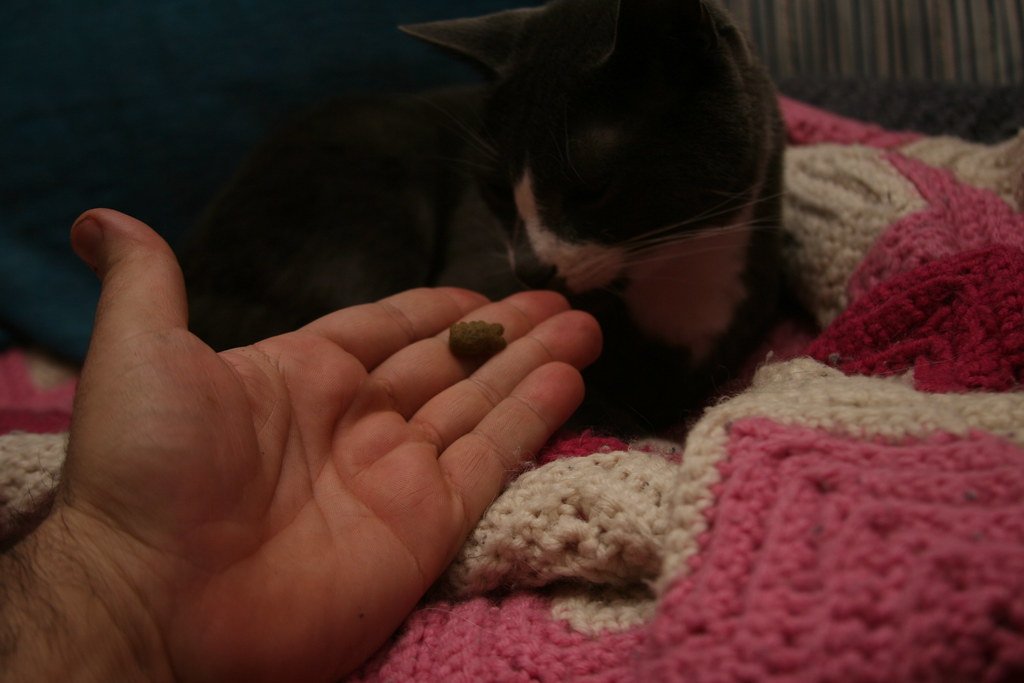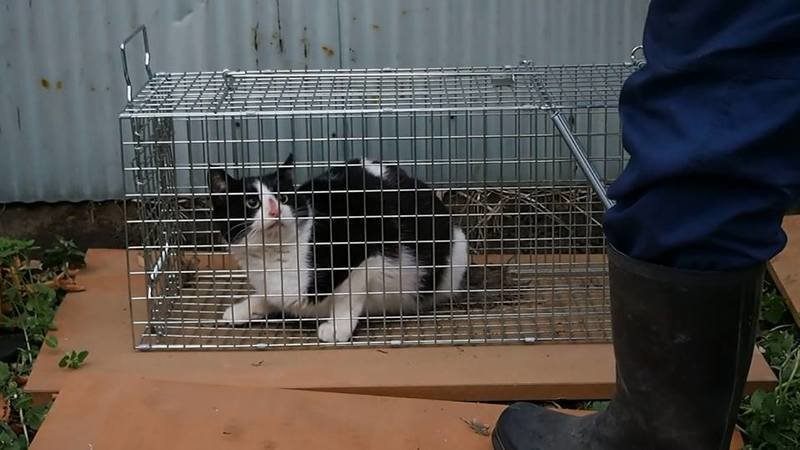A cat, no matter his age, has to learn how to interact with humans. Some cats will already be socialized when you adopt them, but at times they don’t have a clue about living with people. A kitten needs to learn about socialization starting early in life. Learn in this post some information on the best techniques and tips on how to socialize cats.

One of my references for this post, petmd.com, includes a quote from Shawn Simons, founder of Kitty Bungalow Charm School for Wayward Cats. His organization is a non-profit business in Los Angeles, California, with a mission of rescuing feral street kittens. His training turns them into well-socialized pets.
Here’s what he says about adopting a new cat: “When people adopt dogs, we’re told how to crate train the dog, leash train them, and given all this information on how to care for the dog. When people adopt a cat, they’re given a box to take home. You open the box and say, ‘Welcome home.’ And that’s the extent of how most people introduce a cat into their home.”
Socializing Kittens
It’s best to start the kitten socializing process as soon as the mama cat will let you get near her babies, perhaps as young as three weeks old. It’s actually very easy to socialize a kitten — just spend time with him. This process can include having the kitten meet a variety of humans, and playing with children.

A very small kitten needs at least two hours of human interaction per day, so they learn to trust people; then they will make great pets. This early exposure to people gets the kitten to think of non-cats, such as humans, as social partners.
If a kitten seems standoffish, you will need to spend more time with that one. Be around him as much as possible, playing, petting, holding the kitten and also talking to him. It’s amazing how effective a kind voice can become as it also allows the kitten to soften toward you.
Make Her Comfortable In Your Space
When you first get your kitten, start her out in one room of your house. The whole house may seem a bit overwhelming at first to the baby cat. Let her get used to one room at first.
Here’s a good suggestion: When first starting training with the kitten, block off access to under the bed, as otherwise you could end up with a cat who always retreats under the bed. Once the cat is more sure of herself, the barriers can be removed.
Socializing An Older Cat
You can also successfully socialize an older cat. Just keep in mind that you must ramp up your patience and give your cat plenty of time to adjust.
What kind of changes will the cat go through at your house? Think about what experiences he may have. Is your neighborhood noisy? What about traffic sounds? Do you often play loud music? What about the noise when you vacuum, or use power tools? How about the hours you work? Will you spend a lot of your day away from your pet?
All of these factors could make your furry friend nervous, and could slow down the socialization process.

Here are suggestions to help kitty get used to handling:
1) Use slow, deliberate movements and a calm, quiet voice.
2) Get on the floor near the cat so you and he can interact at the same level.
3) When petting, begin with head and shoulders. Avoid that sensitive underbelly.
4) If you lift kitty, lift smoothly from under his chest.
5) Remember to use treats or other positive reinforcement.

Stay Flexible
If the cat gets over-agitated, take a break. Flexibility proves important. To start, make lessons only 15 minutes long.
Just remember to let your kitty set the pace.
Perhaps you have chosen to adopt a shy, fearful cat, or maybe a feral cat. Possibly you can socialize this cat and make him a happy member of your family. Please know that the process may not be easy. Follow the link supplied further in this post, and you can read an excellent explanation of the process involved.
Meet “Best Friends”
In 2007, an organization called Best Friends took part in helping with a terrible cat hoarding situation in Pahrump, Nevada. Here, nearly 800 cats lived in a barren compound in the middle of the desert. Best Friends became involved in something called the Great Kitty Rescue.
First priority involved getting food, water, and medical care to the scared cats, who hid from and avoided people, and might even be considered feral. Best Friends wanted to socialize as many of these cats as possible, so the cats could lose their fear, become house cats, and find a forever home.
Best Friends set up a process for socializing these cats, and designed their methods to give us a great method for socializing shy and fearful animals. They called this process “Miss Sherry’s Finishing School for Felines.”
First, each cat got its own small cage. This step allowed the cats to actually feel safer in an enclosed space. Then, the staff could have access to the cats and trust in people could be re-established.

Once in the cages, the cats go through a series of lessons. Instead of going into the lessons learned, I recommend you read the full post, so you will have all the details. Use this link: http://resources.bestfriends.org/article/how-socialize-very-shy-or-fearful-cats
This article gives so much good information that you will gain a great deal, I believe, by reading the whole thing, so if you have a cat that’s seriously lacking in socialization skills, or if perhaps you want to try your luck with a feral cat, this method might provide just the information you look for.
Know that you can create a very positive change in your kitty, with time, patience, and love. May this post give you a start toward the information that you will need.
Here are the references I used for this post: getmd.com/cat/training/kitten-care-101-how-socialize-kittens aspcapetinsurance.com/resources/how-to-socialize-your-cat/ foundanimals.org/how-to-socialize-a-cat/ http://resources.bestfriends.org/article/how-socialize-very-shy-or-fearful-cat

